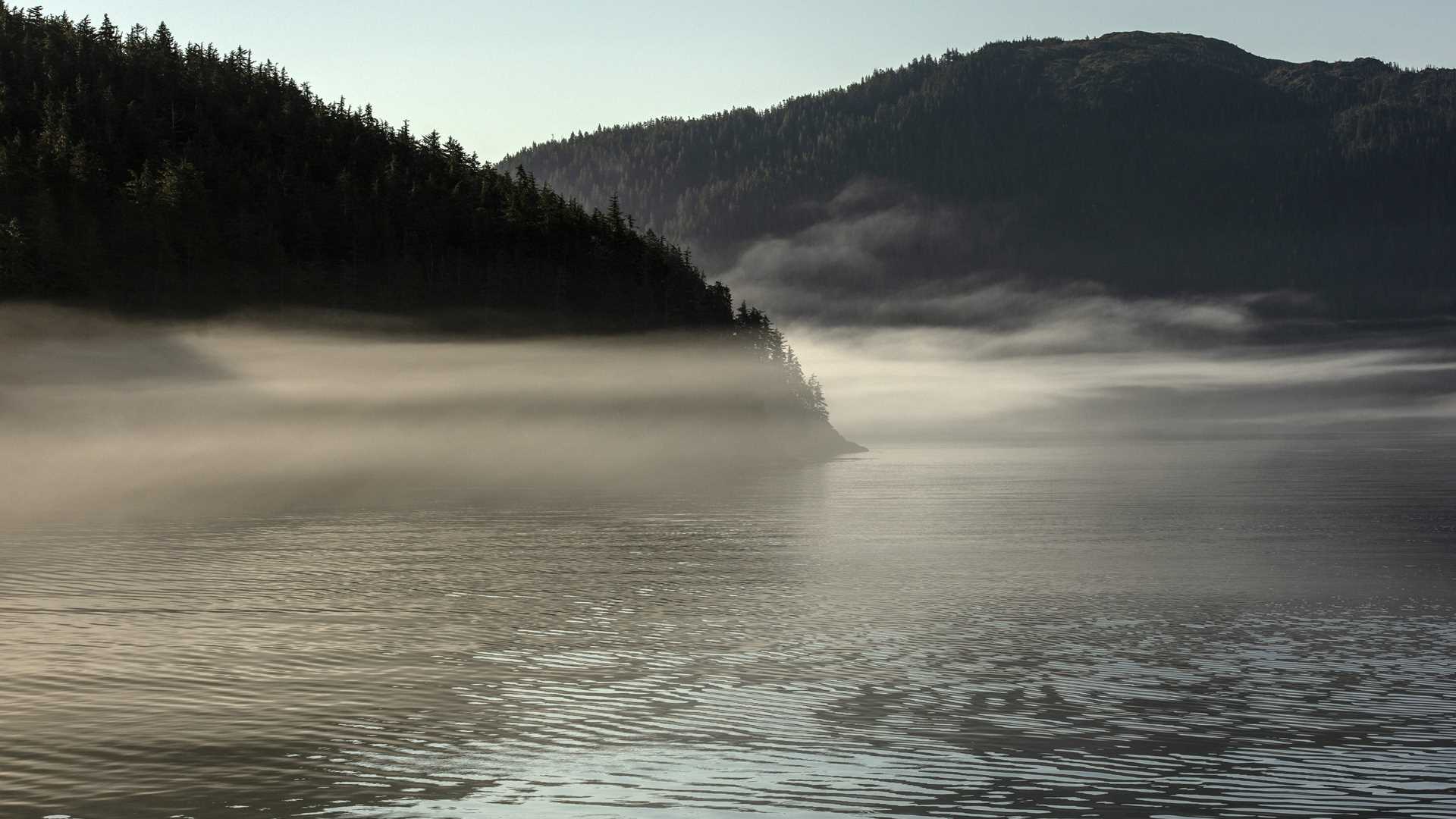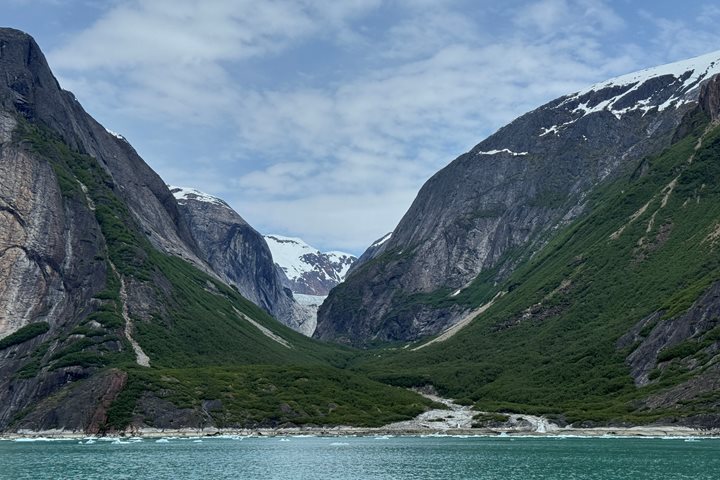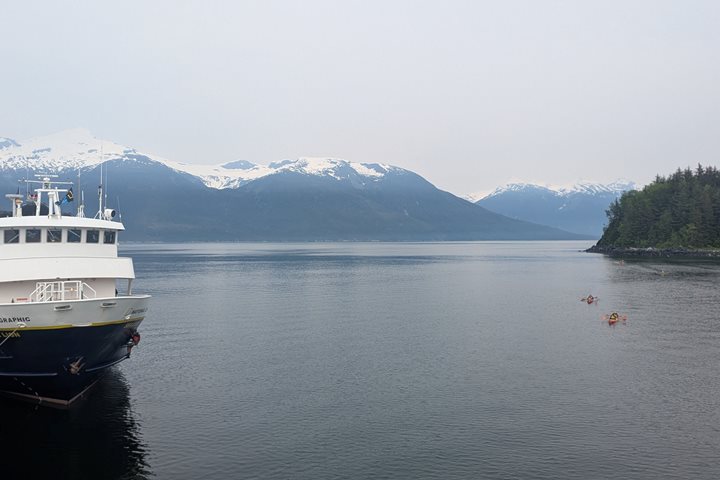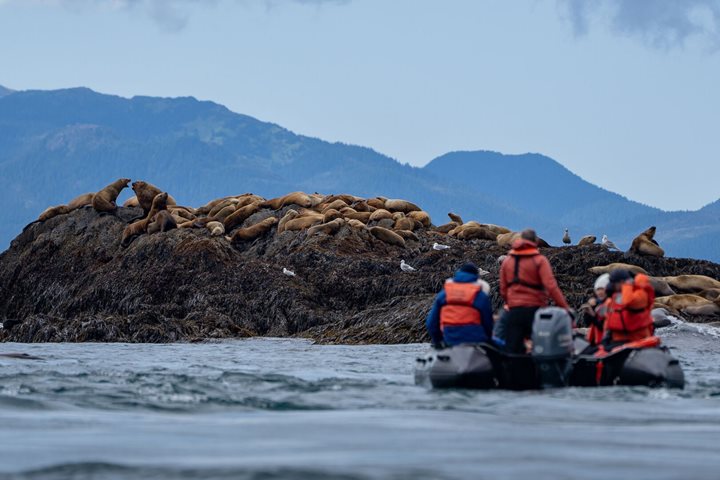Today we woke up to a gorgeous day here aboard National Geographic Sea Lion. We had one of those rare days with gorgeous misty clouds hanging low on the waterline that soon burned off to a bluebird day with the sun shining. The spirit of adventure was palpable among the guests and staff as we understand the importance of this place. This is one of the most incredible areas to visit in Southeast Alaska because this is where everything comes to feed. This is the northernmost entrance to the Inside Passage, so all the water entering from the Pacific Ocean needs to rush through this narrow passageway. The continental shelf also rises steeply here, creating something called an upwelling. Nutrient rich water from the bottom of the ocean rises from the seafloor and comes up to the surface. This allows us the ability to see a variety of critters feeding at the surface. Today we were excited to hopefully encounter sea otters, Steller sea lions, bald eagles, and humpback whales.
After a delicious breakfast, we hopped into our expedition landing crafts and set out to explore this amazing island chain. We were quickly greeted by nesting gulls, hauled out Steller sea lions, and feeding sea otters. While tucking into a cove, we saw a group of sea otters rafting amongst the bull kelp. A couple even had young pups with them. On our way back, we had a surprise encounter with a humpback whale, which took everyone’s breath away. This was truly a remarkable day.
Our afternoon of cruising was filled with laughter and spotting wildlife from the bow of the ship. Our bartenders and crew kept us well fed and hydrated as we sailed into another Southeast Alaskan sunset. This was an unforgettable day on National Geographic Sea Lion, and we can’t wait for what the rest of the week has to offer.







